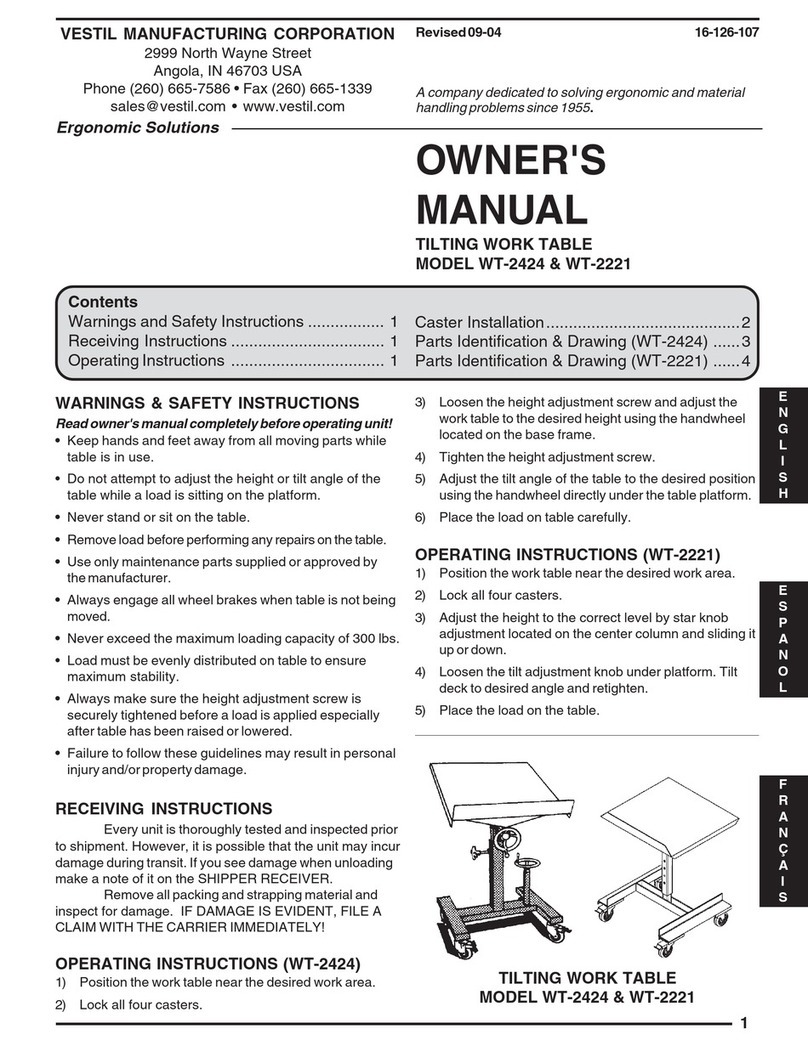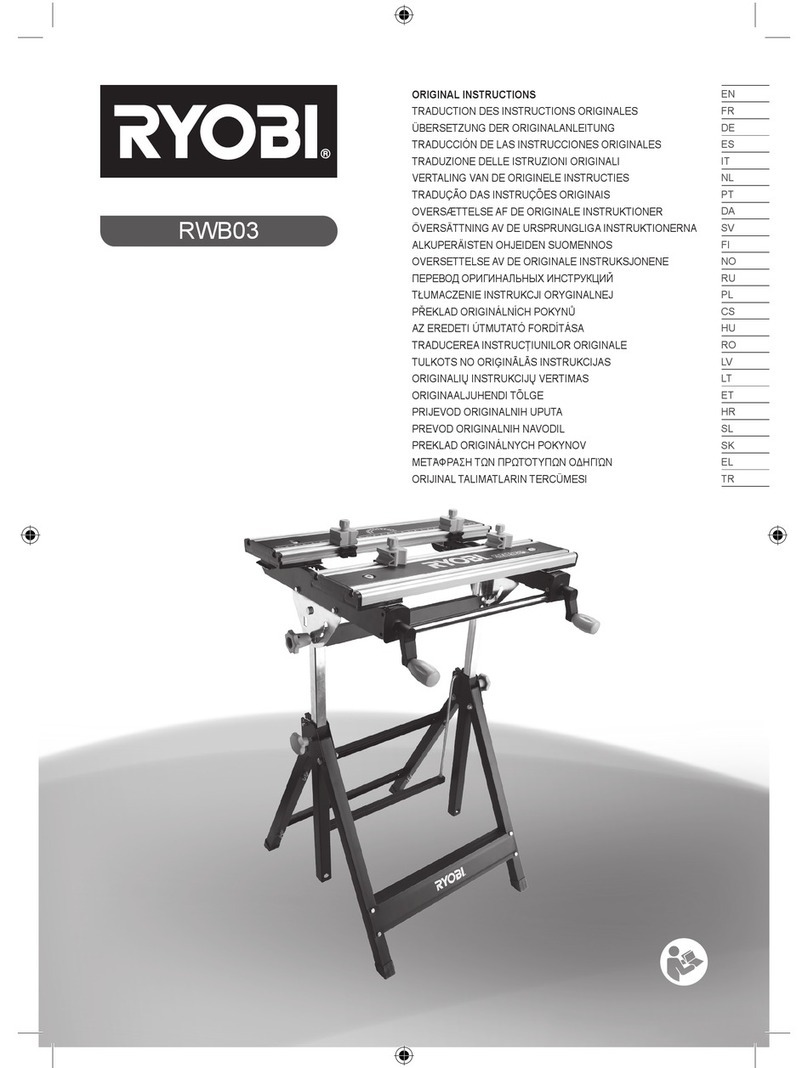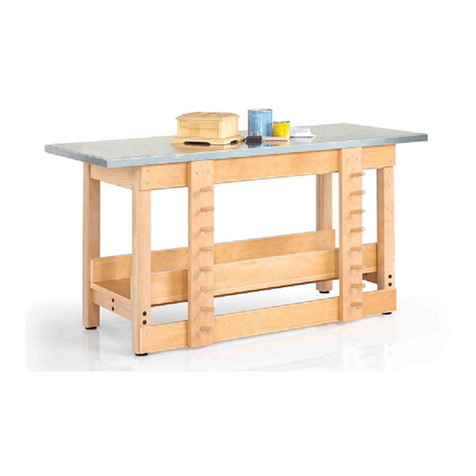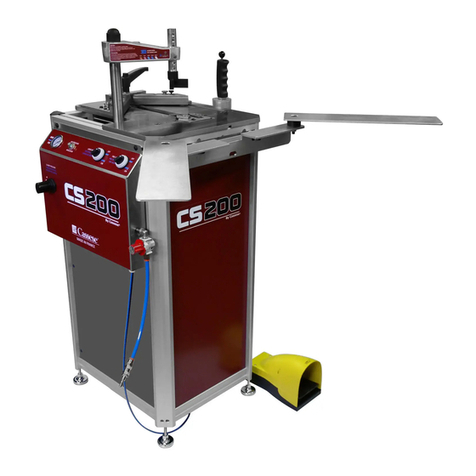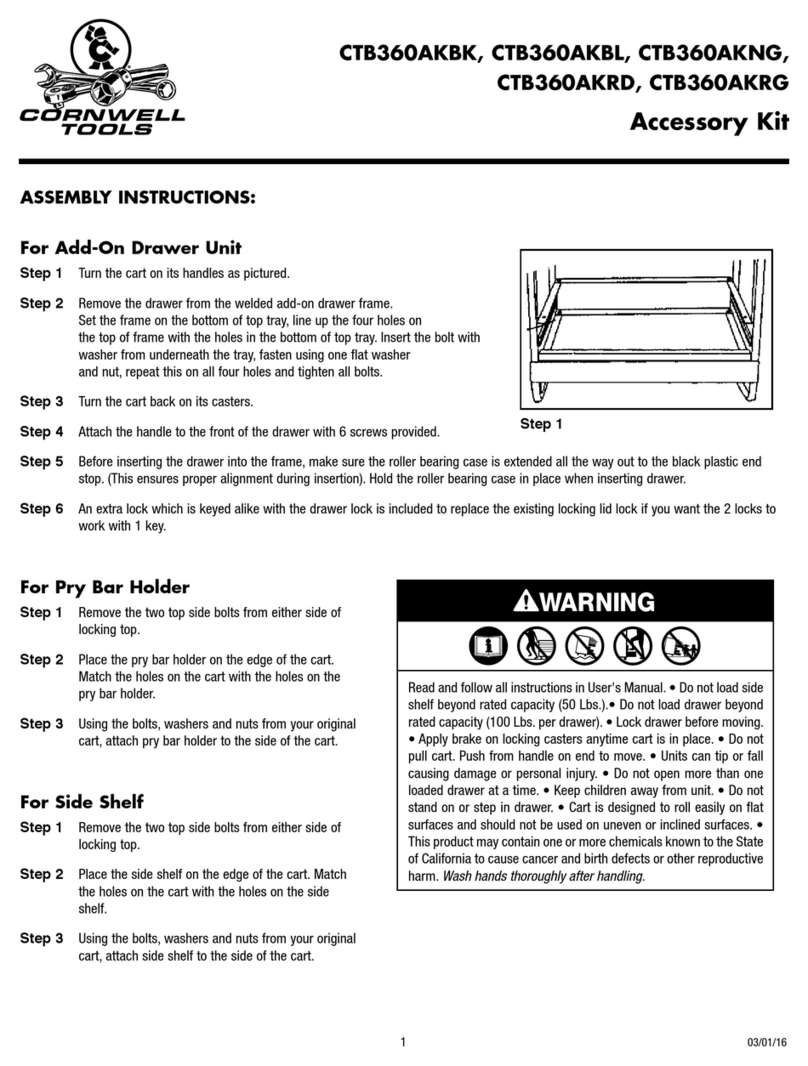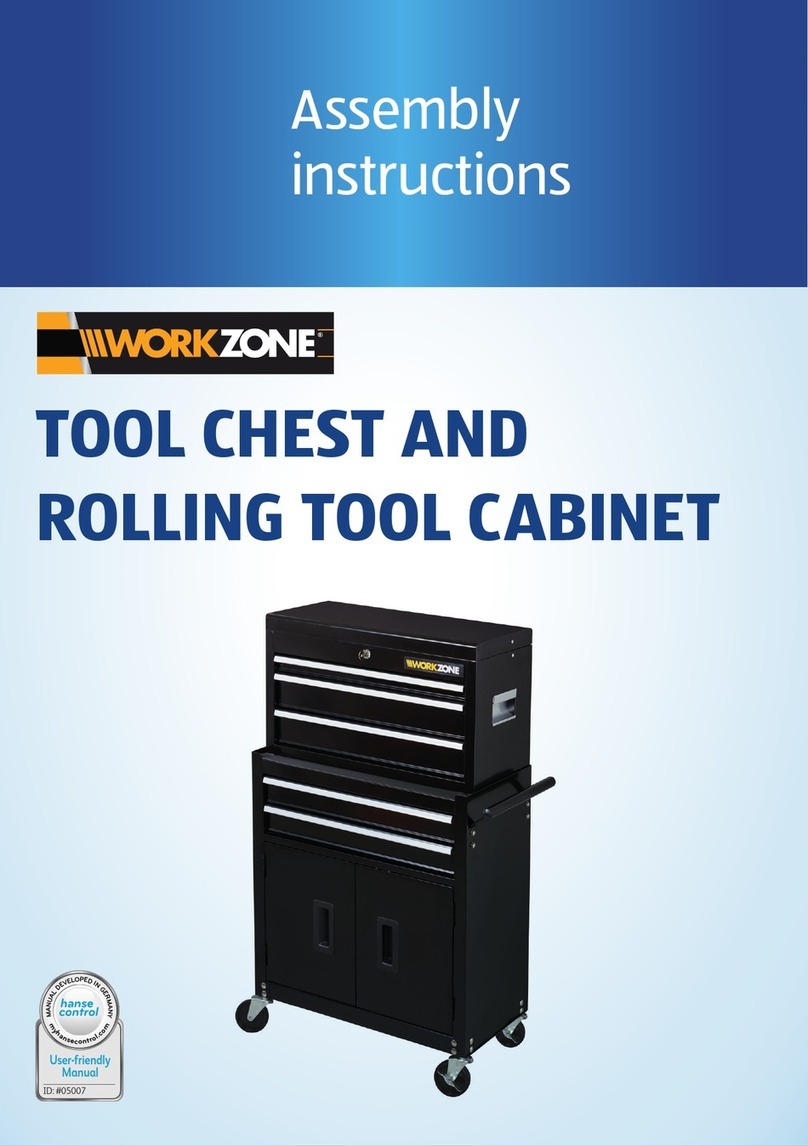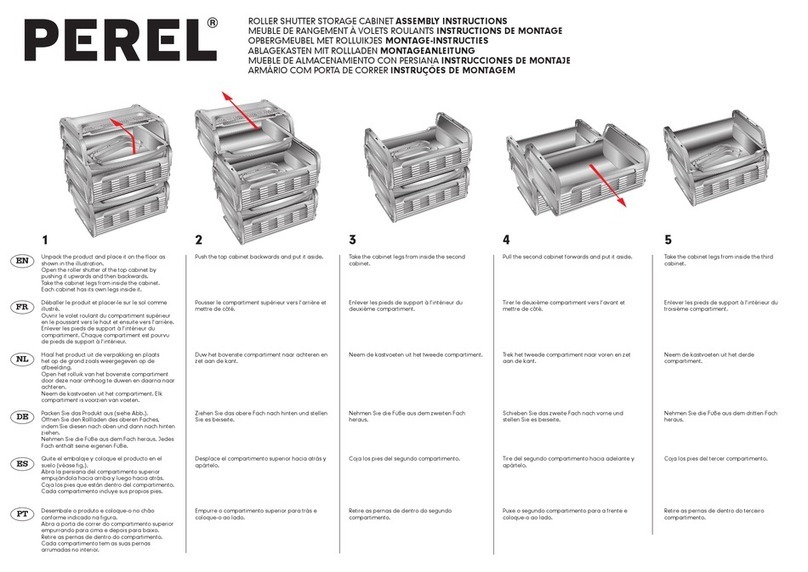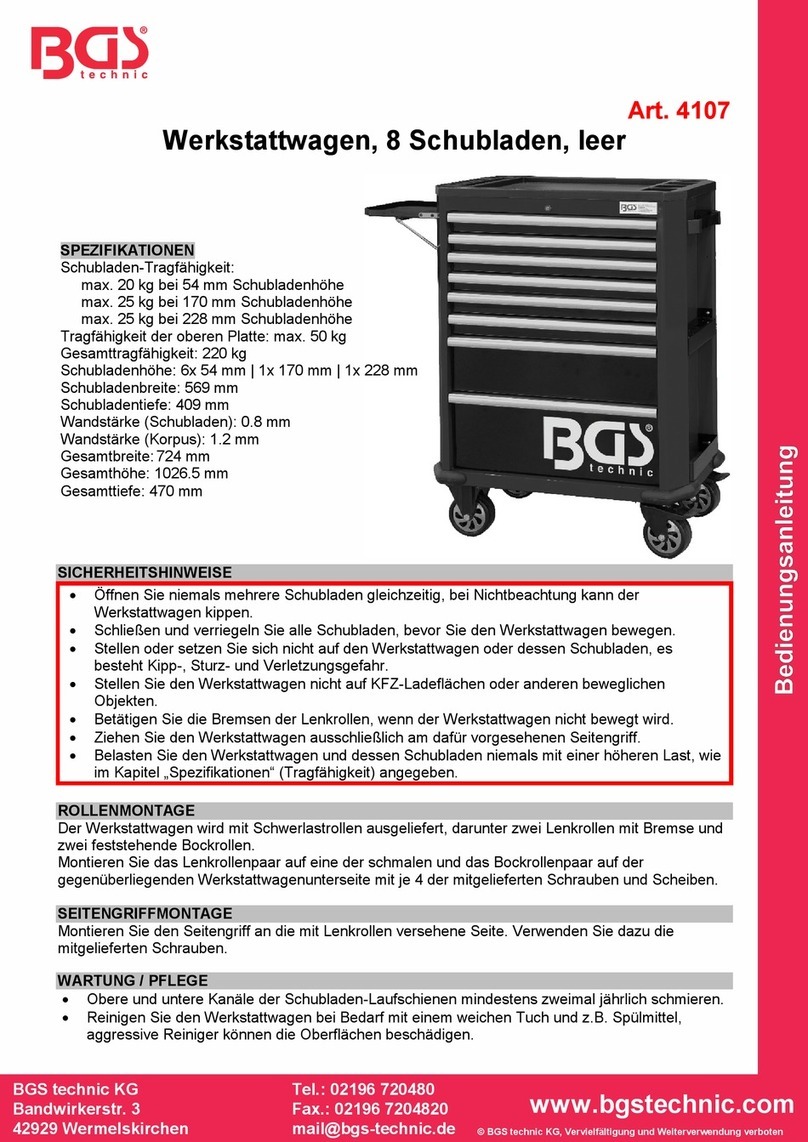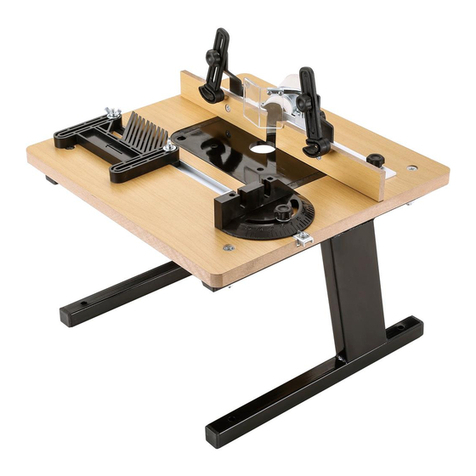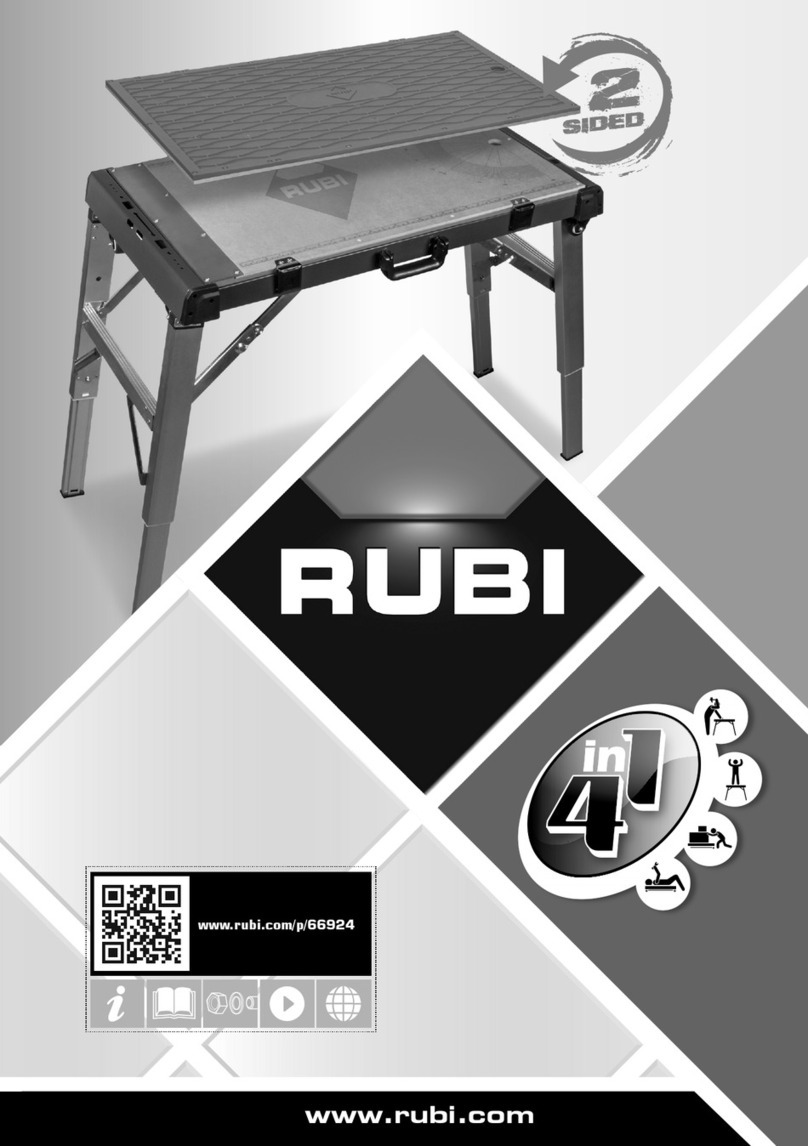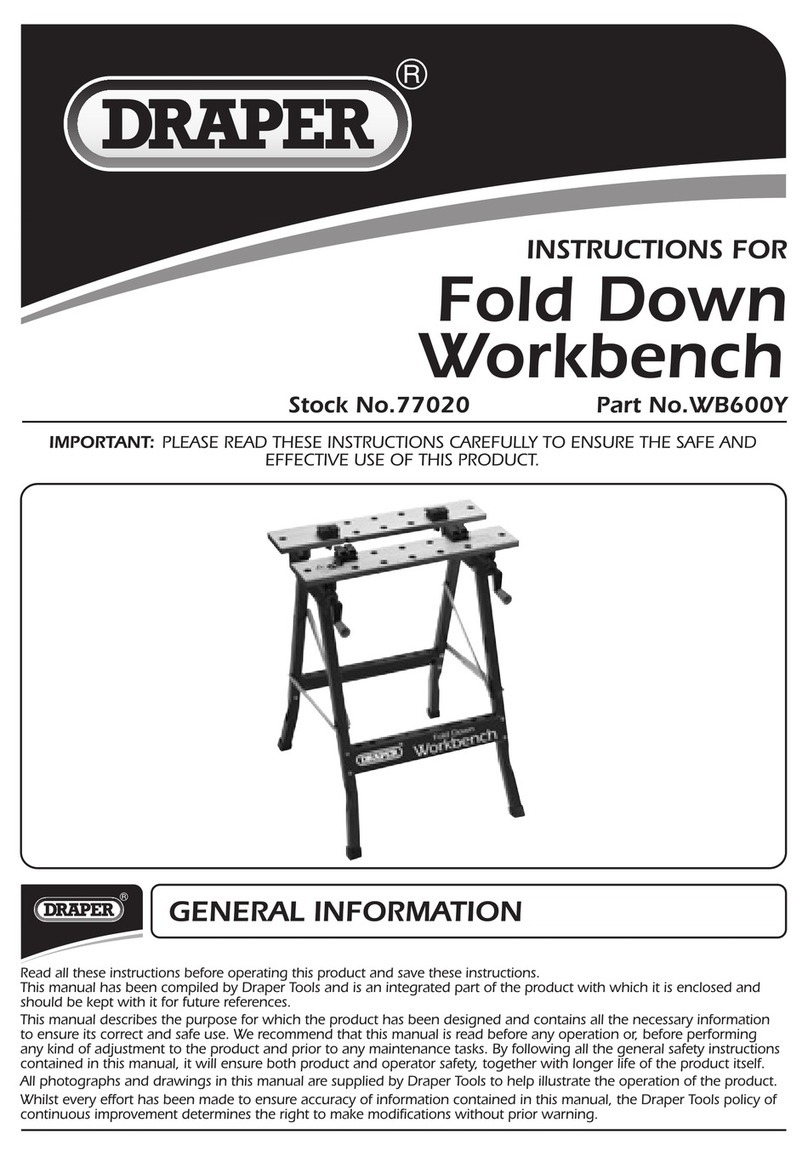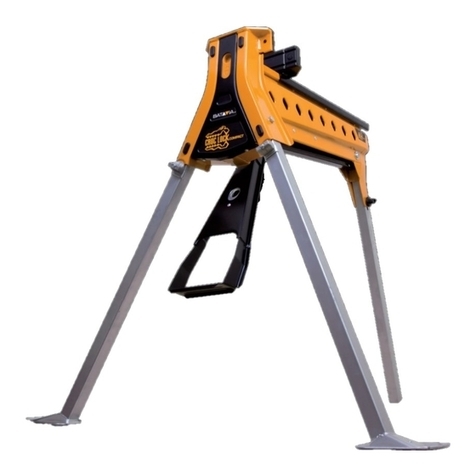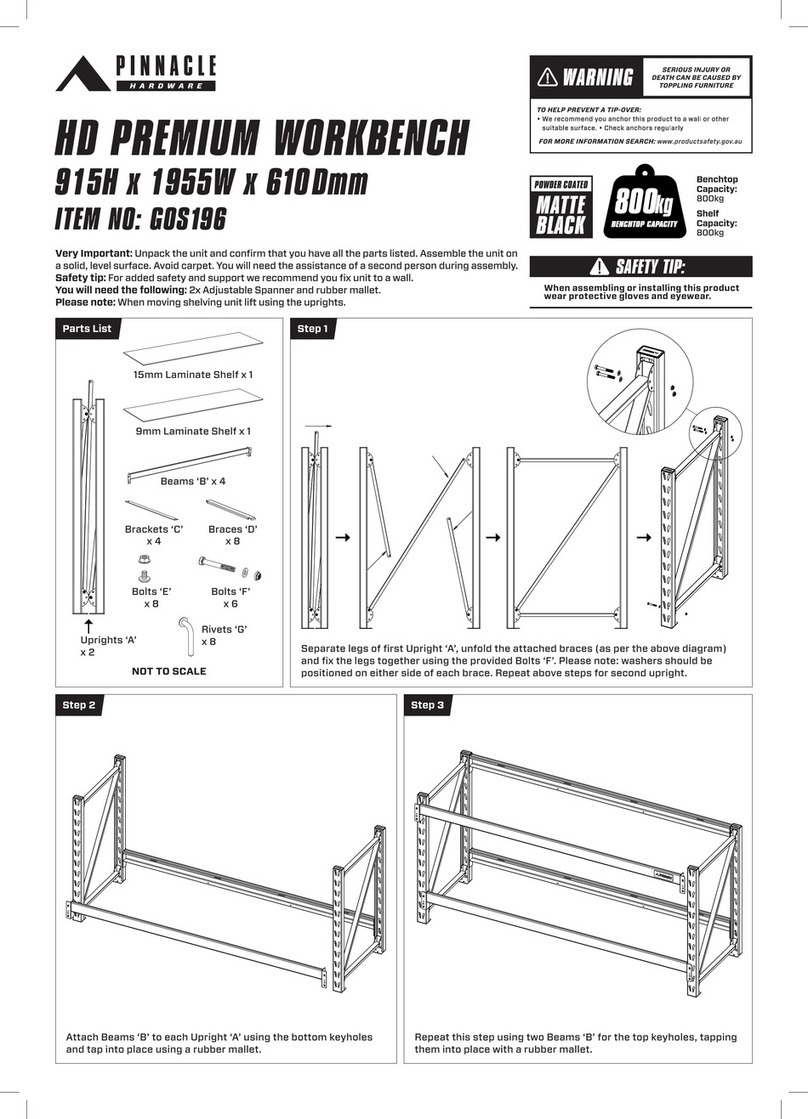
2
HEALTH AND SAFETY GUIDANCE NOTES
Please read first!
1. Assemble tool in strict accordance with these
instructions. Only if you follow the instructions
exactly does the machine conform to the safety
regulations and can be safely operated.
2. Read the safety instructions before initial
operation.
3. Keep these instructions for reference on any
issues you may be uncertain about.
Specified conditions of use
1. This machine is intended to rip and crosscut
grown timber, faced boards, chip board and
wood-core plywood sheets, and similar
wood-derived materials.
2. Do not cut round stock without suitable jigs or
fixtures. The rotating saw blade could turn the
work-piece.
3. Any other use is considered to be not as
specified and not permitted. The manufacturer
is not liable for any damage caused by
unspecified use.
General safety instructions
When using this tool observe the following safety
instructions, to exclude the risk of personal injury or
material damage.
Please also observe the special safety instructions
in the respective chapters; where applicable, follow
the legal directives or regulations for the prevention
of accidents pertaining to the use of circular saws.
General hazards!
1. Keep your work area tidy – a messy work area
invites accidents.
2. Be alert. Know what you are doing. Set out to
work with reason. Do not operate tool while
under the influence of drugs, alcohol or
medication.
3. Consider environmental effects:
Provide proper lighting.
Prevent adverse body positions, Ensure firm
footing and keep you balance at all times. Use
suitable work-piece supports when cutting
long stock.
Do not operate tool near inflammable liquids or
gases.
4. The saw shall only be started and operated by
persons familiar with circular saws, and who
are at any time aware of the dangers
associated with the operation of such tool.
5. Keep bystanders, particularly children, out of
the danger zone. Persons under 18 years of
age shall use this tool only in the course of
their vocational training, under the supervision
of an instructor.
6. Do not permit other persons to touch the tool or
power cable while it is running.
7. Do not overload tool – use it only within the
performance range it was designed for (see
Specifications).
Danger! Risk of electric shock!
1. Do not expose tool to rain.
2. Do not operate tool in damp or wet
environment.
3. Prevent body contact with earthed objects
such as radiators, pipes, cooking stoves,
refrigerators when operating this tool.
4. Do not use the power cable for purposes it is
not intended for.
Risk of personal injury and crushing by moving
parts!
1. Do not operate the tool without installed
guards.
2. Always keep sufficient distance to the saw
blade. Use suitable feeding aids, if necessary.
3. Keep sufficient distance to driven components
when operating the electric tool.
4. Do not attempt to stop the saw blade by
pushing the work-piece against its side.
